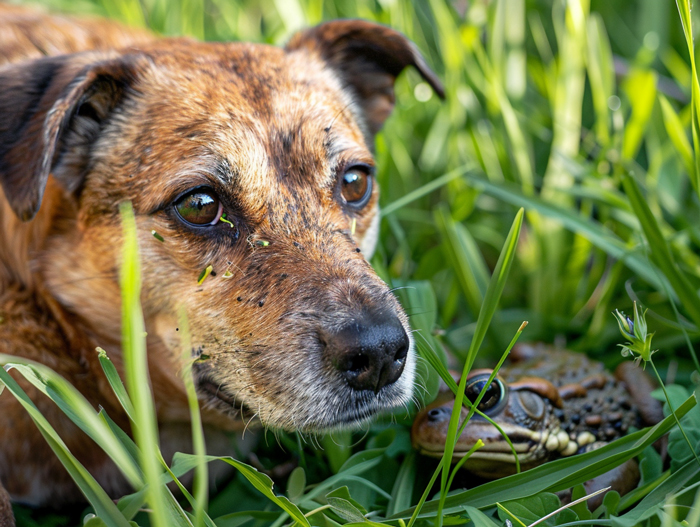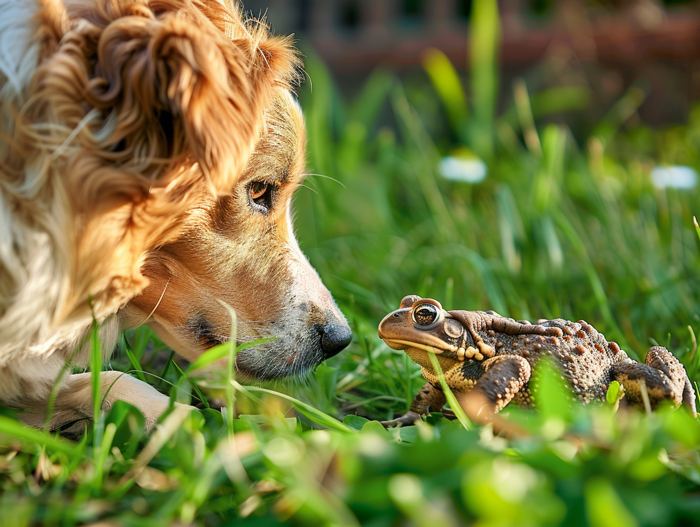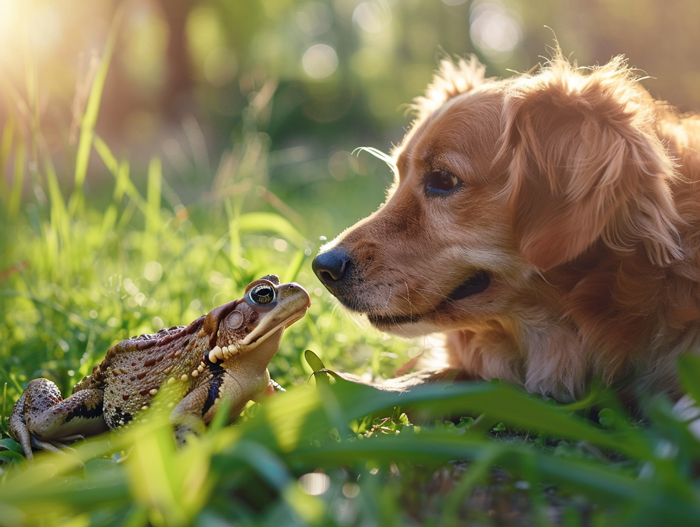If your dog licked a toad, you might be wondering if a trip to the vet is necessary. Toads can secrete toxins that are harmful to pets when ingested. It’s important to know the signs of toad poisoning in dogs and when to seek professional help.
Symptoms of toad poisoning in dogs can range from drooling and pawing at the mouth to more severe reactions like seizures and difficulty breathing. If your dog has licked a toad and is displaying any concerning symptoms, it’s best to contact your vet immediately. Prompt treatment can make a big difference in your dog’s recovery.
While not all toad encounters require a vet visit, it’s crucial to monitor your dog closely for any unusual behavior or symptoms after licking a toad. Your vet can provide guidance on next steps based on your dog’s specific situation.
Key Takeaways
- Toads can secrete toxins that are harmful to dogs when ingested, leading to symptoms like drooling, seizures, and difficulty breathing.
- Not all dog-toad encounters require a vet visit, but monitoring for any unusual behavior is crucial.
- Knowing how to identify different toad species and recognizing signs of toxicity can help in assessing the level of danger to your pet.
- Prompt veterinary attention is essential if your dog displays symptoms of toad poisoning to prevent severe health complications.
- Rinse your dog’s mouth with water, monitor for symptoms, and avoid inducing vomiting without consulting a vet if your dog licks a toad.
- Always seek professional veterinary guidance for proper treatment and avoid home remedies in cases of toad poisoning.
Identifying the Toad

Recognizing Common Toad Species
To differentiate between various toad species, look out for these distinguishing features:
- American Toad: Rough, bumpy skin with warts, ranges from brown to reddish in color.
- Fowler’s Toad: Smoother skin, smaller in size compared to the American toad, typically grayish with light colored warts.
- Cane Toad: Large, aggressive, and infamous for its toxic skin, dark brown with a distinct triangular gland behind the eye.
Signs of Toxicity in Toads
To determine toxicity in toads, watch for these most common symptoms:
- Drooling excessively
- Vomiting
- Red or irritated skin
- Seizures
- Difficulty breathing
Remember, if your dog exhibits any of these signs after encountering a toad, consulting a vet promptly is crucial for their well-being.
Potential Risks of Toad Licking

Dangers of Toad Secretions
- Toads secrete toxins as a defense mechanism against predators.
- These toxins can be harmful or even fatal if ingested by your dog.
- Bufotoxin found in some toad species can cause severe reactions in pets.
Health Effects on Dogs
- Immediate symptoms of toad toxin ingestion include excessive drooling, vomiting, and irregular heartbeats.
- Ingesting toad secretions can lead to seizures, difficulty breathing, and organ failure in dogs.
- Prompt veterinary attention is crucial to prevent serious health complications.
- Lethargy and weakness may follow toad toxin exposure.
- Disorientation or agitation can indicate toxicity in dogs.
- Monitor your pet for any unusual behavior after encountering a toad.
When to Consult a Vet

Immediate Actions to Take
- Rinse: Flush your dog’s mouth with water for 10-15 minutes.
- Monitoring: Observe for symptoms like drooling, vomiting, or unusual behavior.
- Do Not: Induce vomiting without consulting a vet.
- Be Prompt: Seek veterinary attention immediately.
- Provide Details: Inform the vet about the incident and symptoms observed.
- Avoid Home Remedies: Professional guidance is crucial for proper treatment.
Conclusion
If your dog has licked a toad, swift action is essential. Rinse their mouth, stay vigilant for symptoms, and contact a vet promptly. Remember, inducing vomiting can be risky without professional advice. Inform your vet about the incident and observed symptoms. Avoid DIY treatments and trust in expert care for the best outcome. Your dog’s well-being is top priority, so don’t hesitate to seek veterinary help when needed.

Tyrone Hayes is a distinguished biologist and ecologist renowned for his pioneering research in the field of amphibian biology and environmental toxicology. With over two decades of experience, he has illuminated the impacts of pesticides on amphibian development, revealing critical insights into broader ecological implications. Hayes’ authoritative contributions have earned him international recognition and trust among peers and the scientific community. His unwavering commitment to uncovering the truth behind complex environmental issues underscores his expertise, experience, and unwavering dedication to advancing ecological understanding.
